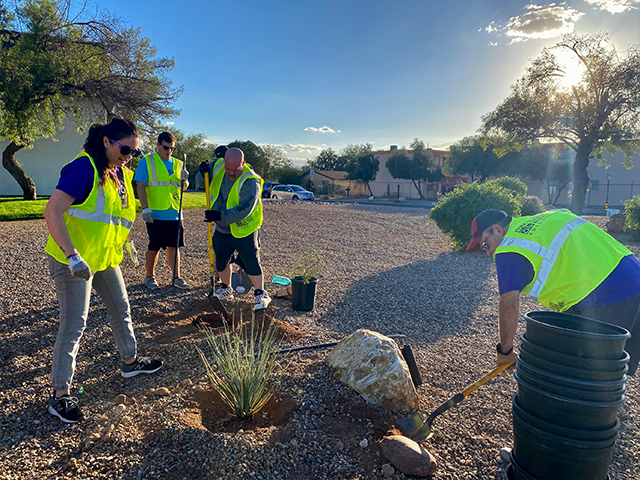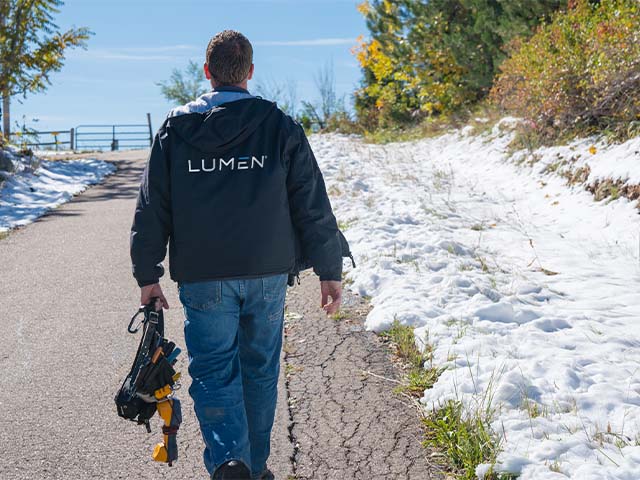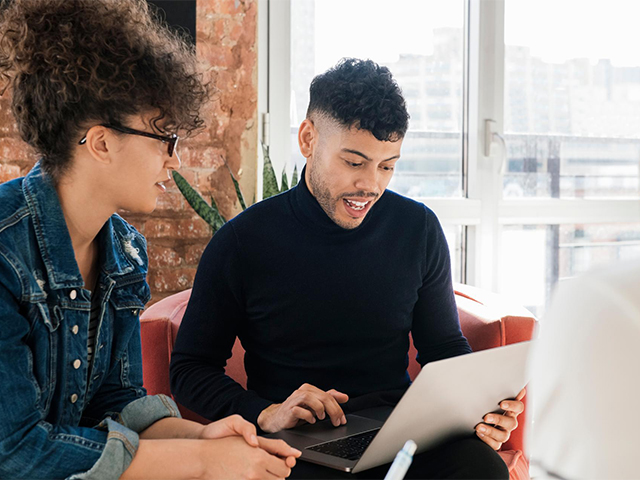Lumen Lede
Tzeitel Looper-Buchanan, a Native American who is part of the Cherokee Tribe, recently participated in a volunteer event with Lumen CEO Kate Johnson and employees at Lumen Field in honor of Native American Heritage Month.
Charged with advancing digital inclusion by cultivating relationships and enhancing Native American communities’ participation in the digital economy, Tzeitel is leading the way in her new role as Lumen’s Director of Public Sector Programs and Community Partnerships.
Inspired by the day’s discussions around having a positive impact on digital inclusion in tribal communities, she is sharing more about Lumen’s plans for leveraging the company’s massive network to promote digitally inclusive communities.
Why is working with tribal areas key to promoting digital inclusion?
It’s important because we can make a real difference in people’s lives by bringing better technology and connectivity to Native American communities. It’s work that is good for both communities and business.
In California, we are helping expand internet access by adding thousands of miles of broadband connectivity to their middle-mile infrastructure. It’s a project that we’re hoping to replicate in other areas. As we build a new roadmap and focus on implementation plans, we’re also renewing our approach to tribal networks.
For example, we recently met with local state and tribal leaders across the state of Washington to talk about how we can work together to bring broadband to more areas. Washington is home to 29 tribes, with Seattle being an especially important market because it includes the big three tribes: Muckleshoot, Puyallup and Snohomish. Understanding their challenges and diversity meant listening to their priorities and suggestions for improving broadband access, affordability and digital literacy in their communities.
Each community has different needs. What does fostering digital inclusion look like in practice?
We are working to put our customers at the center of everything we do. That means communicating with them to better understand the differences and similarities of what each community needs, including tribal communities. Being attentive is a big focus for us going forward as we connect more Americans to the power of the digital economy. It allows us to flex our listening muscles and build on our customer obsession to deliver positive outcomes for all.
This recent visit to University of Washington gave me the chance to visit a long-house style facility created as a gathering space for Native American students and others. It was a beautiful example of how understanding specific students’ needs can create a pipeline to success.
While there are many shared challenges across rural communities, such as limited access to education, the internet, healthcare and healthy food, there will always be differences that create unique community needs. Fostering digital inclusion means really understanding a particular community’s needs—whether it be access, affordability, literacy or some combination of those—and partnering locally to deliver what they need.
What role do employee resource groups (ERGs) play when it comes to promoting digital inclusion for tribal and other often marginalized communities?
Our ERGs build community. They help open new opportunities for our people to be good stewards, building better relationships with an increased community presence and more opportunities for real connection.
We’ve seen how diversity within our ERGs helps break down silos both internally and externally. Cross-functional collaboration across our public sector, public policy and mass market teams fosters innovative ideas that benefit both our communities and our bottom line.
Our Voice of Many Feathers (VoMF) ERG has about 400 members representing 35 different tribes. While in Washington, our VoMF ERG hosted a volunteer event with the Seattle Seahawks at Lumen Field to foster conversations around digital inclusivity and equity with local tribal communities. Our ongoing partnership with the Seahawks demonstrates the power of partnerships to create positive change in the community and shows our shared commitment to building awareness and education around tribal communities.
As we expand our fiber footprint, especially to include more markets that touch tribal lands, the diversity of our ERGs is critically important to help us better align our resources to what our customers see, hear and need.










